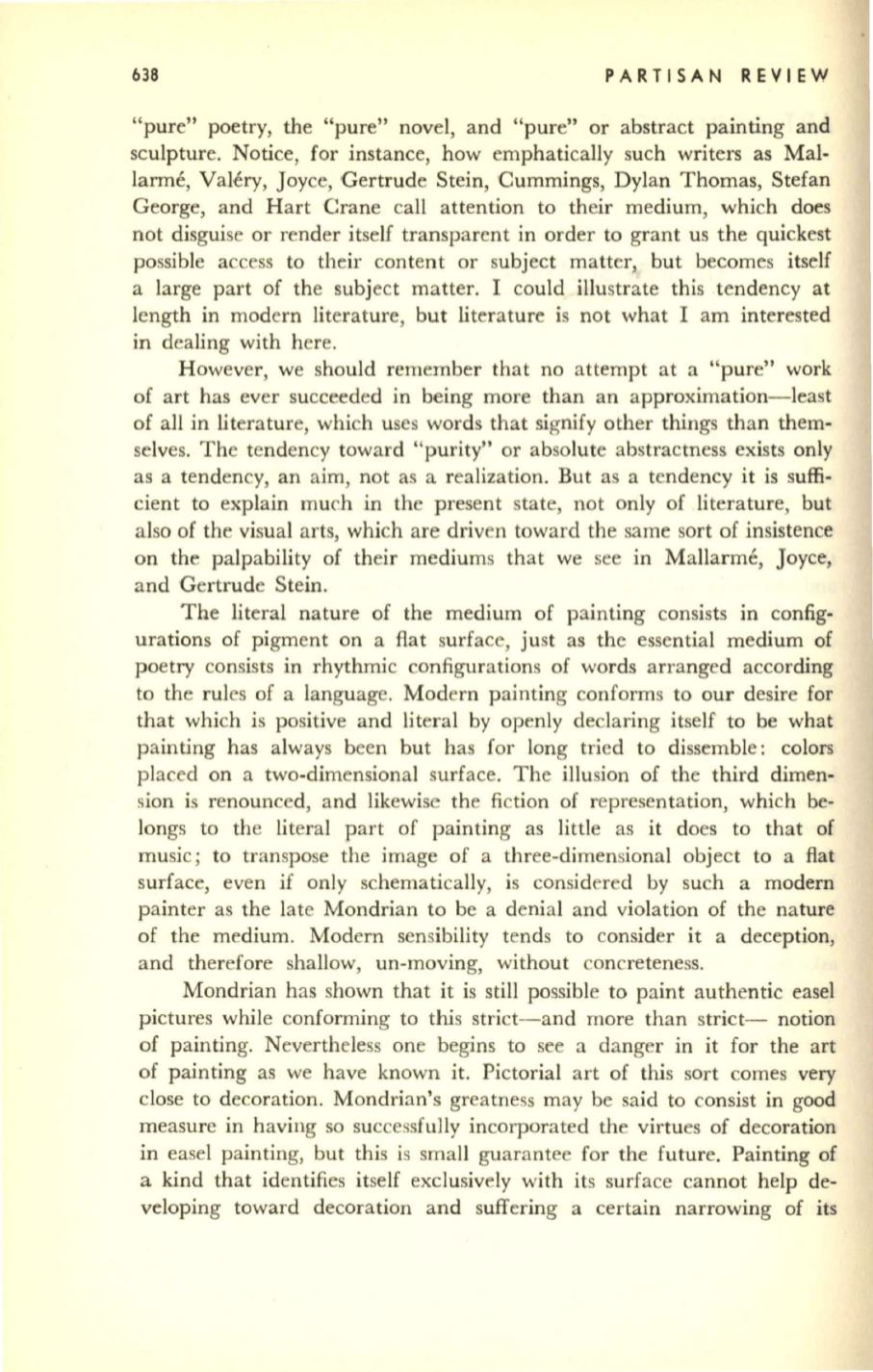
638
PARTISAN REVIEW
"pure" poetry, the "pure" novel, and "pure" or abstract painting and
sculpture. Notice, for instance, how emphatically such writers as Mal–
larme, Valery, Joyce, Gertrude Stein, Cummings, Dylan Thomas, Stefan
George, and Hart Crane call attention to their medium, which does
not disguise or render itself transparent in order to grant us the quickest
possible access to their content or subj ect matter, but becomes itself
a large part of the subject matter. I could illustrate this tendency at
length in modern literature, but literature is not what I am interested
in dealing with here.
However, we should remember that no attempt at a "pure" work
of art has ever succeeded in being more than an approximation- least
of all in literature, which uses words that signify other things than them–
selves. The tendency toward " purity" or absolute abstractness exists only
as a tendency, an aim, not as a realization. But as a tendency it is suffi–
cient to explain much in the present state, not only of literature, but
also of the visual arts, which are driven toward the same sort of insistence
on the palpability of their mediums that we see in Mallarme, Joyce,
and Gertrude Stein.
The literal nature of the medium of painting consists in config–
urations of pigment on a flat surface, just as the essential medium of
poetry consists in rhythmic configurations of words arranged according
to the rules of a language. Modern painting conforms to our desire for
that which is positive and literal by openly declaring itself to be what
painting has always been but has for long tried to dissemble: colors
placed on a two-dimensional surface. The illu ion of the third dimen–
sion is renounced, and likewise the fiction of representation, which be–
longs to the literal part of painting as little as it does to that of
music; to transpose the image of a three-dimensional object to a flat
surface, even if only schematically, is considered by such a modern
painter as the late Mondrian to be a denial and violation of the nature
of the medium. Modern sensibility tends to consider it a deception,
and therefore shallow, un-moving, without concreteness.
Mondrian has shown that it is still possible to paint authentic easel
pictures while conforming to this strict- and more than strict- notion
of painting. Nevertheless one begins to see a danger in it for the art
of painting as we have known it. Pictorial art of this sOrt comes very
close to decoration. Mondrian's greatness may be said to consist in good
measure in having so successfully incorporated the virtues of decoration
in easel painting, but this is small guarantee for the future. Painting of
a kind that identifies itself exclusively with its surface cannot help de–
veloping toward decoration and suffering a certain narrowing of its


